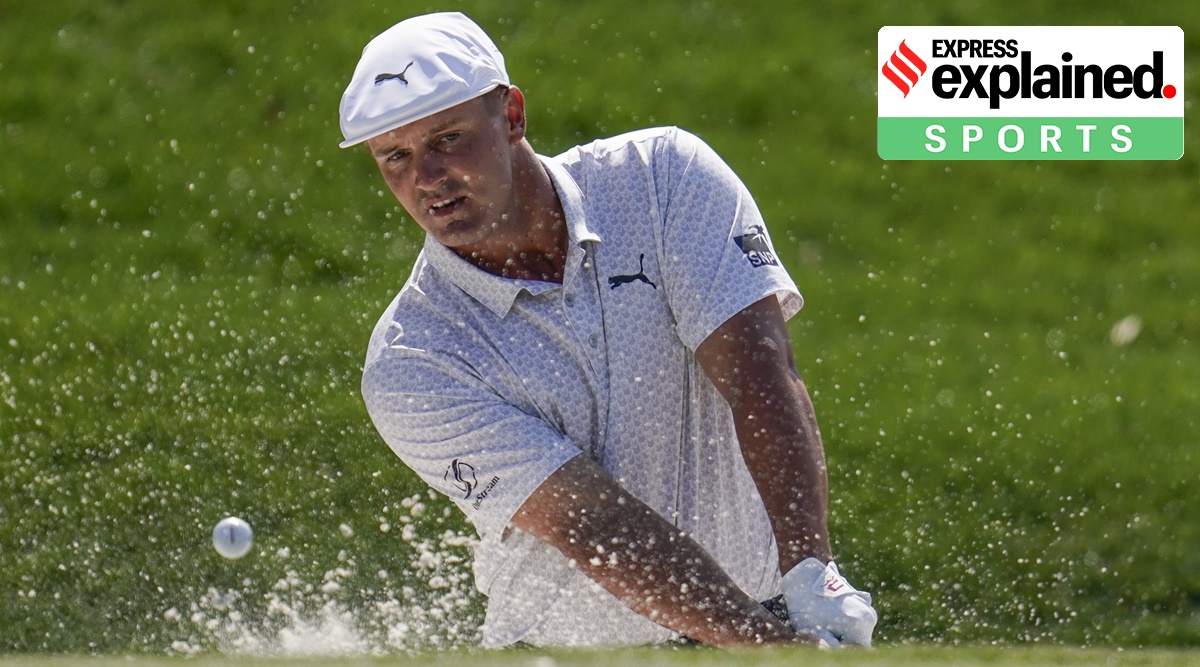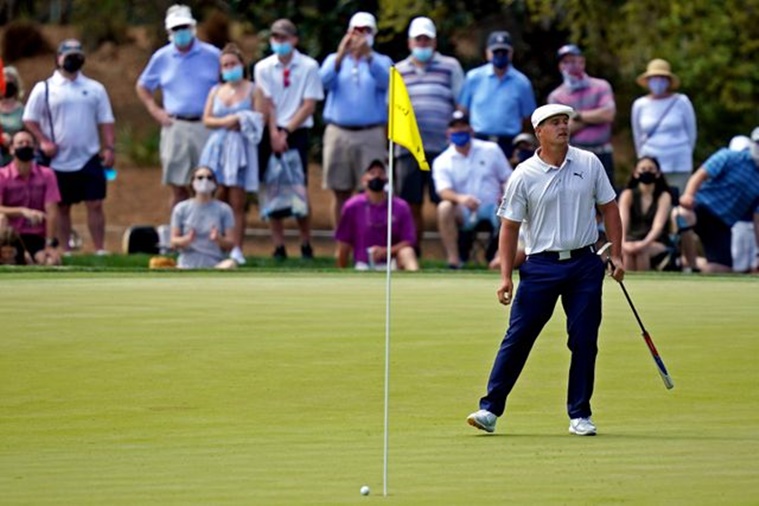
‘You drive for show, and putt for dough’ is an old adage in golf. It means that while hitting the ball long distances off the tee makes for enthralling viewing, it’s the prowess in getting it in the hole that most often decides the winner.
But American Bryson Dechambeau is turning conventional golfing wisdom on its head. While the 27-year-old has a well-rounded game with no obvious weaknesses, it’s his newly-acquired power with the driver in hand – a result of meticulous planning and hard work before and during the lockdown – that has put him in a different league from his peers, and even those that came before him.
Who is Bryson Dechambeau?
A physics graduate, Dechambeau won the NCAA title and US Amateur Open in 2015, becoming just the fifth player to clinch both in the same year. When he took home his maiden Major at the 2020 US Open, he became only the third – after Jack Nicklaus and Tiger Woods – to do so. Presently, he is ranked No.5 in the world.
What makes him different from other golfers?
In his initial few years as a professional, Dechambeau caught the eye with his highly analytical and scientific approach to the game, prompting the nickname ‘The Scientist’. All his irons are exactly the same length and his putting stroke is all his own. He employs a ‘Muscle Specialist’ to fine-tune his game.
How is he pushing the boundaries of golf?
Woods is generally credited with promoting the notion that golfers were athletes too. The hitherto image of a golfer – middle-aged men, often with weight around their waists, taking a leisurely walk around the course – has been consigned to the scrapheap. Now, golfers exhibit impressive toned physiques, and focus on fitness, power and athleticism as much as almost any other sportsperson.
Dechambeau seems a natural progression in that trend. Allied to his unique analytical thought process, he realised that he needed more power and distance to take the next big step in the sport. In late 2019, he started adding muscle mass to his physique – putting on 20 pounds before the Covid-forced break and as much during the lockdown. He targets regular swing speeds of over 200 miles an hour, which necessitated the bulking up.
The difference in his game and results of tournaments were quickly evident. Dechambeau now frequently bombs drives in excess of 350 yards, giving him a big advantage over his competitors.
📣 JOIN NOW 📣: The Express Explained Telegram Channel
He took home the US Open at the tough Winged Foot course – winning by six shots. His final score was six-under and Dechambeau was the only player to finish under par over the course of the tournament. He has won two other PGA Tour events since the restart and is never too far from the top of the leaderboard. He is considered one of the top contenders whenever he tees up for a tournament, and is one of the biggest draw cards in contemporary golf, especially with Woods out of action.
In a way, Dechambeau is now akin to a laboratory-developed prototype, ingrained with all the tools necessary for success on the golf course.
Mar 14, 2021; Ponte Vedra Beach, Florida, USA; Bryson DeChambeau plays his shot from the 16th tee during the final round of The Players Championship golf tournament at TPC Sawgrass – Stadium Course. Mandatory Credit: Jasen Vinlove-USA TODAY Sports
What has been the general reaction to Dechambeau’s approach and success?
Other top golfers have had no option but to take notice. Though Dechambeau is nowhere close to Woods’ winning percentage in his prime, he is showing what can be achieved with a singular drive for improvement. If someone like Rory McIlroy, a former World No.1 with four Major titles, can admit that he lost his natural swing while trying to emulate Dechambeau in finding extra distance off the tee and more speed, one can readily imagine the challenge facing lesser mortals.
As far as rule-makers in golf are concerned, they have moved towards trying to Bryson-proof courses. Space is limited and if he continues to make a mockery of the long par-fours and par-fives, they feel some of the essence of the sport will be lost as the short game, accurate iron play and delicate skills around the greens may not be as crucial anymore. The Royal & Ancient (R&A) and United States Golf Association are mulling restrictions on club lengths. The Distance Insight Report, run by the two governing bodies, has studied the impact of big hitting power on the present and the future of the sport. Golf is a largely conservative sport, reluctant to change. That’s why the direction in which Dechambeau is taking it makes the administrators nervous.
The most apt recent example came at the Arnold Palmer Invitational at Bay Hill earlier this month. The par-five sixth hole, measuring around 528 yards, is considered a tough challenge with a large stretch of water and a big dogleg. Not even the biggest hitters fancy taking the tee shot on. Dechambeau did it, not once, but twice over the weekend. His first drive – 370 yards long – carried the water and even overshot the intended target. On Sunday, the 377-yard drive left him 88 yards in for his second shot – on a par five!
 Ponte Vedra Beach, Florida, USA; Bryson DeChambeau reacts to his putt on the third green during the final round of The Players Championship golf tournament at TPC Sawgrass – Stadium Course. Mandatory Credit: Jasen Vinlove-USA TODAY Sports
Ponte Vedra Beach, Florida, USA; Bryson DeChambeau reacts to his putt on the third green during the final round of The Players Championship golf tournament at TPC Sawgrass – Stadium Course. Mandatory Credit: Jasen Vinlove-USA TODAY Sports
Administrators and golf course designers fear if holes considered tough fail to tame the phenomenon that’s Dechambeau, how far can they go in search of extra land, and will it work. That’s why they are trying to tweak the rulebook to bring him back to the field.
How will Dechambeau deal with all the attention and proposed rule changes?
He says he is “flattered” by the possible rule changes, ostensibly to keep his power in check, and the effect he has had on players like McIlroy. Though he has often been at the forefront of experimentation to seek improvement, he says “I’m going to do what they say is legal and find the best way to play for me under the rules of golf.”
